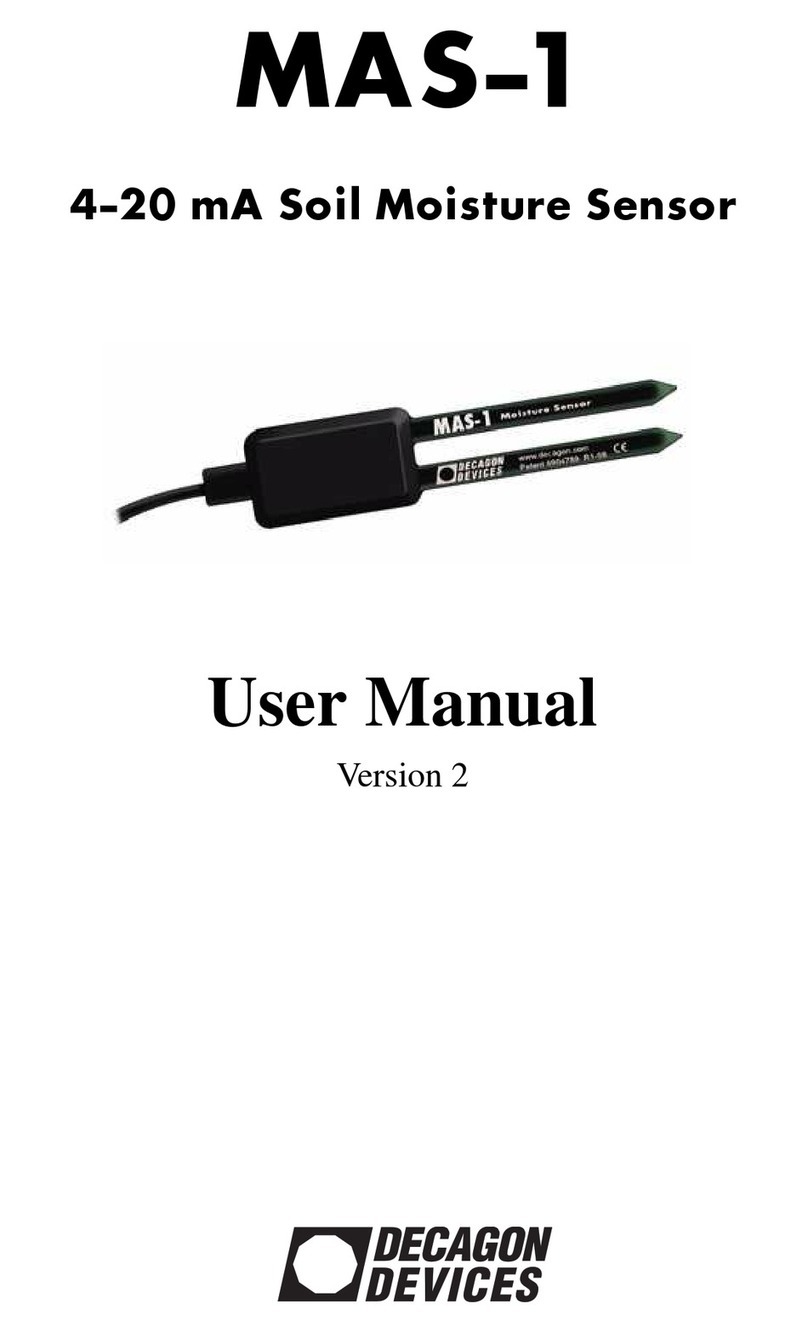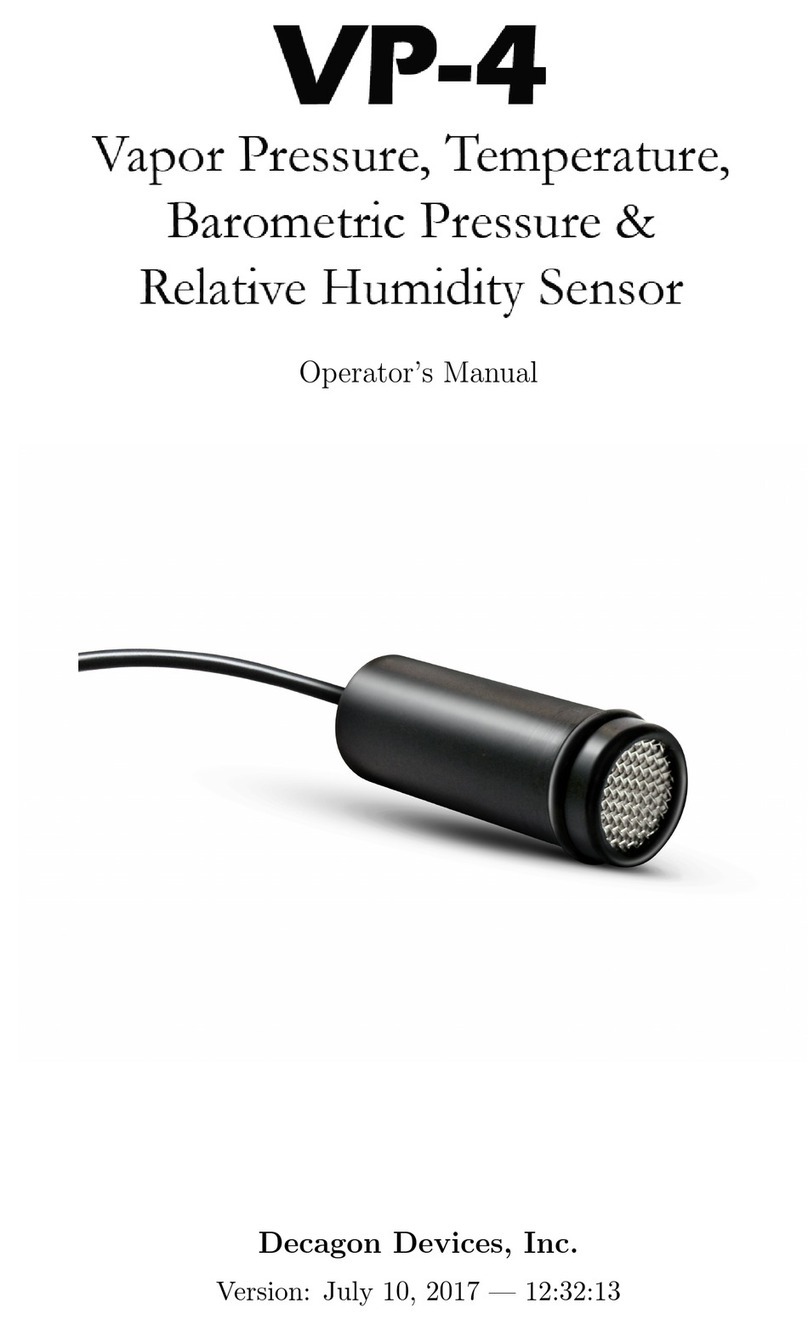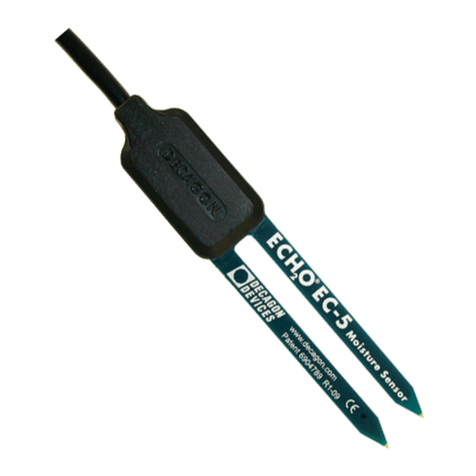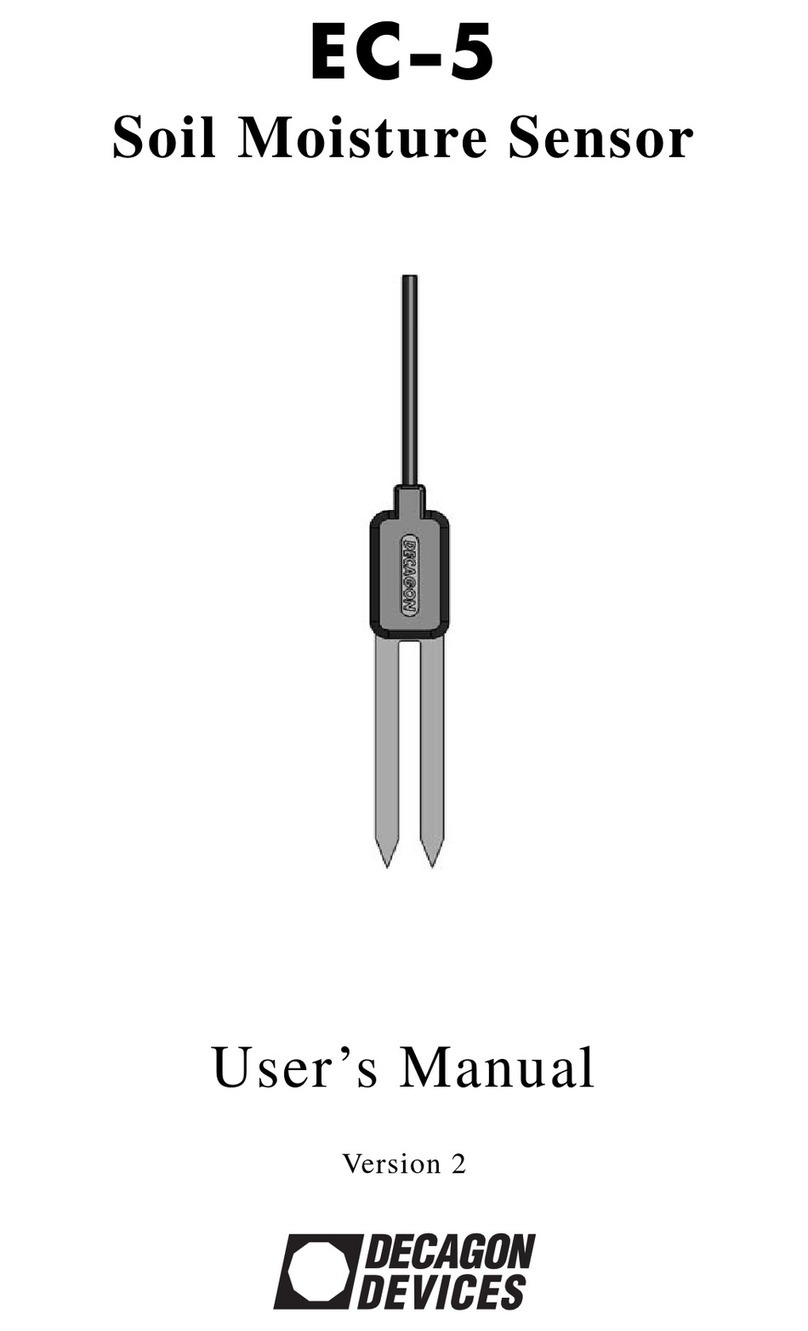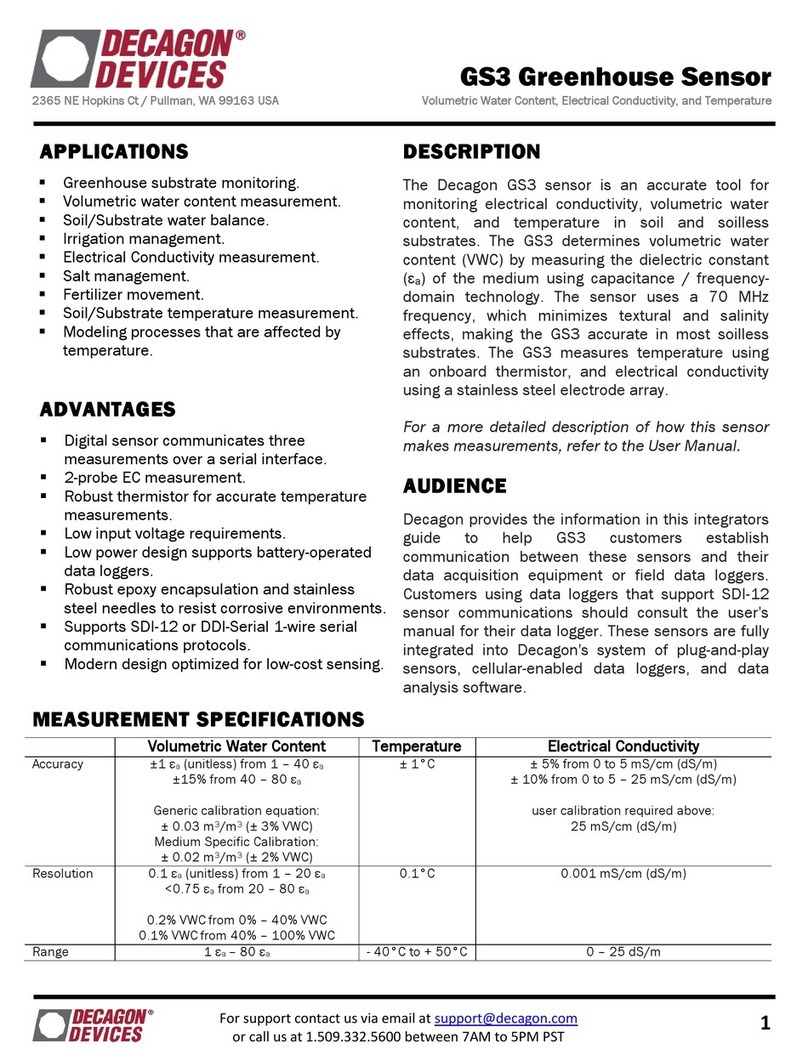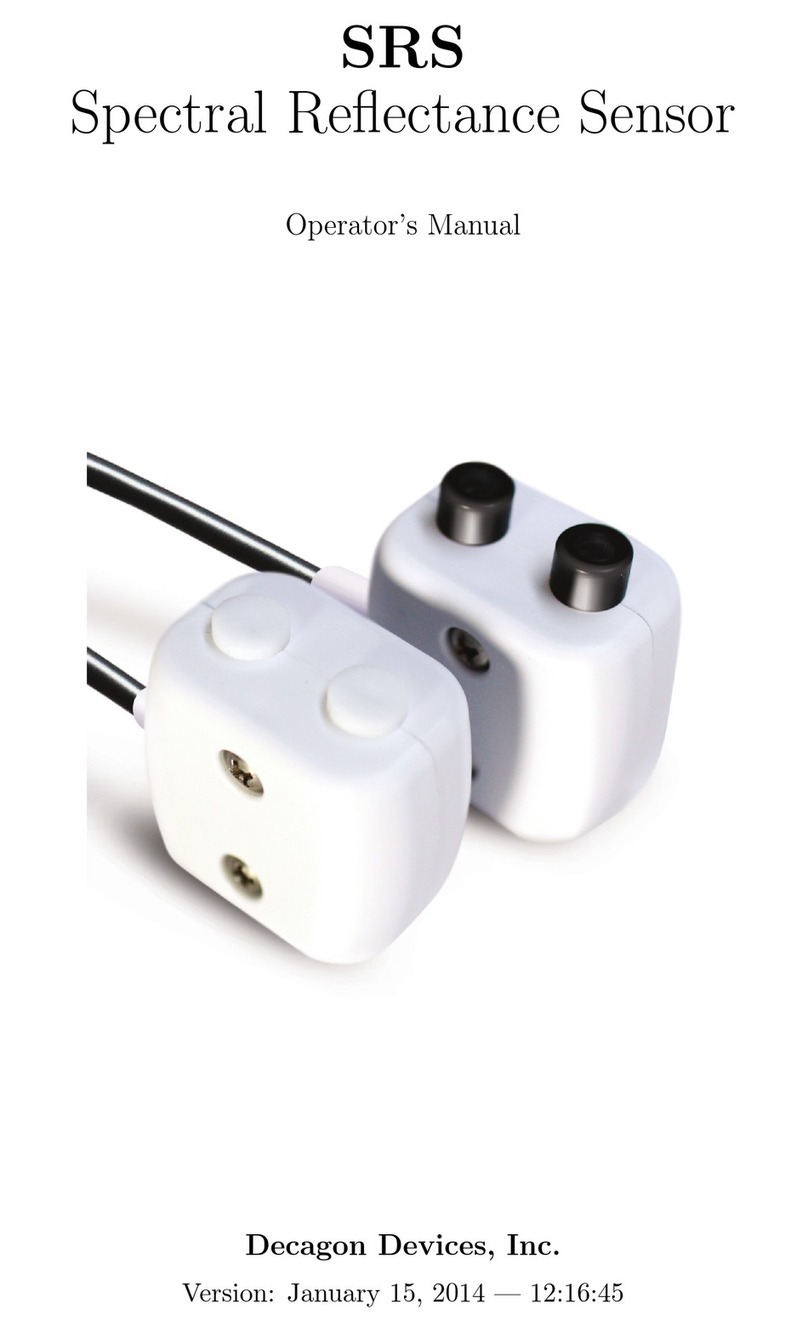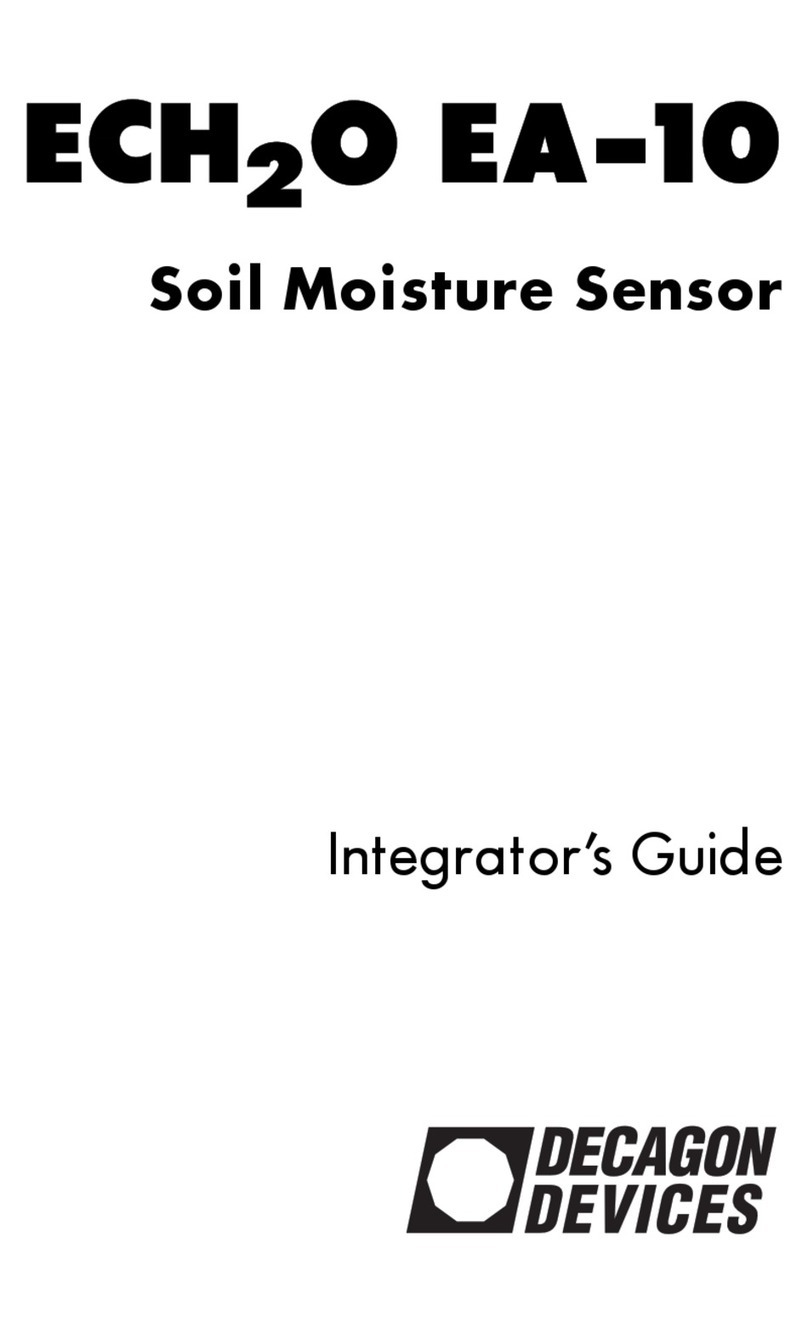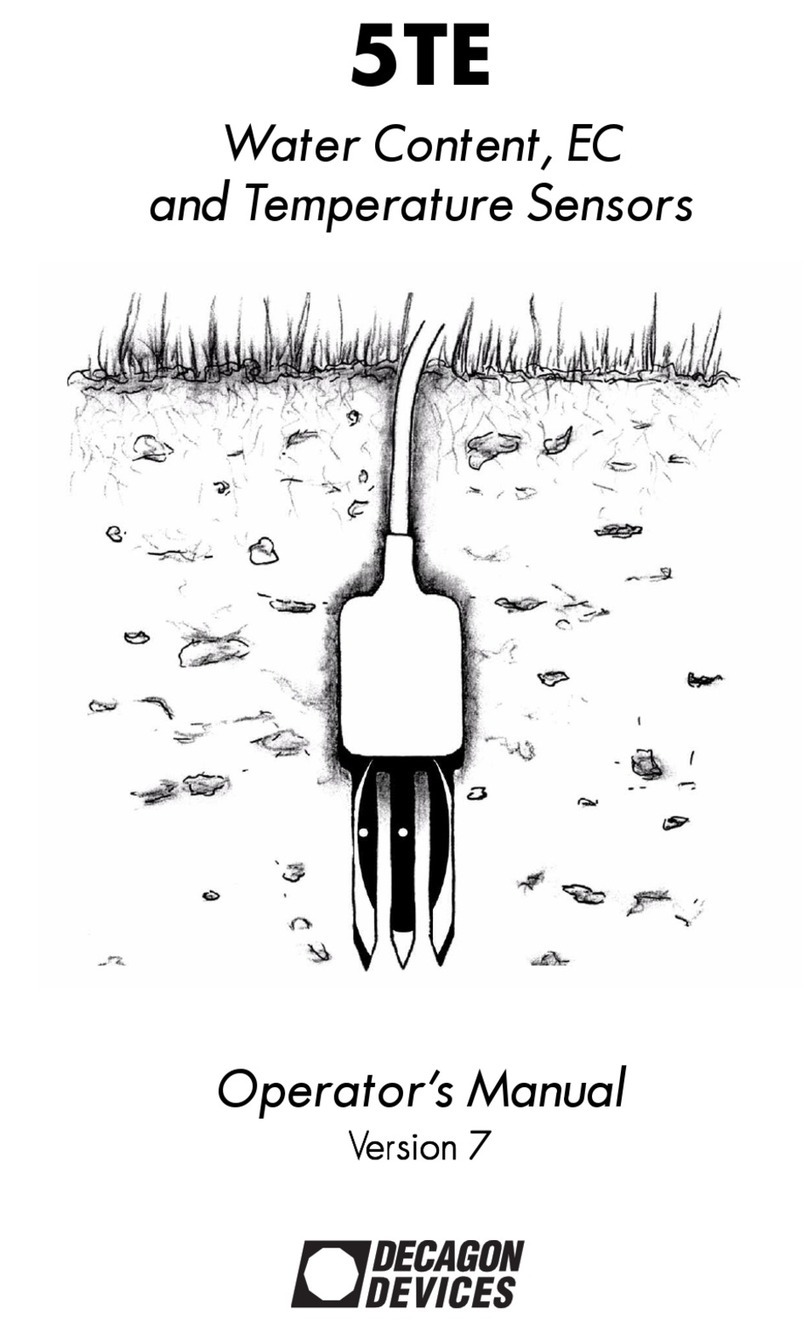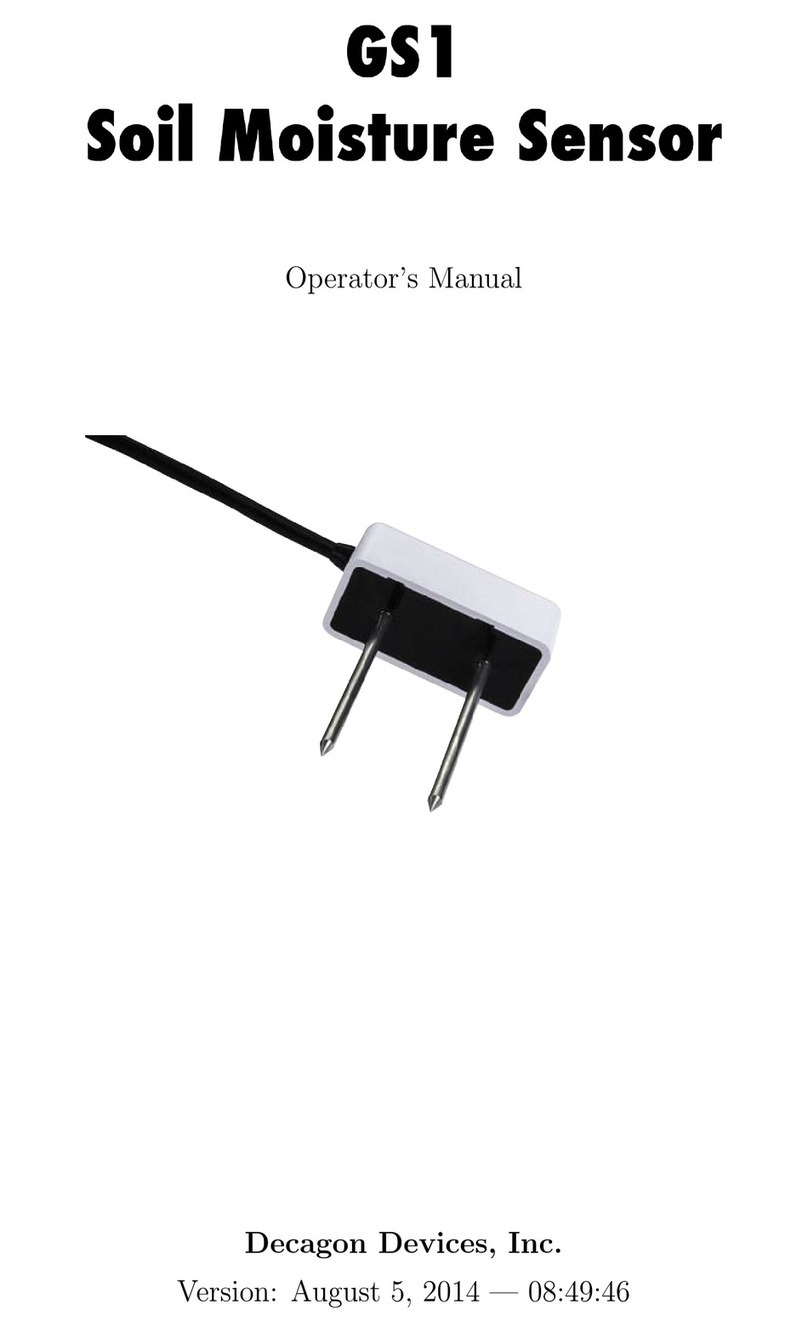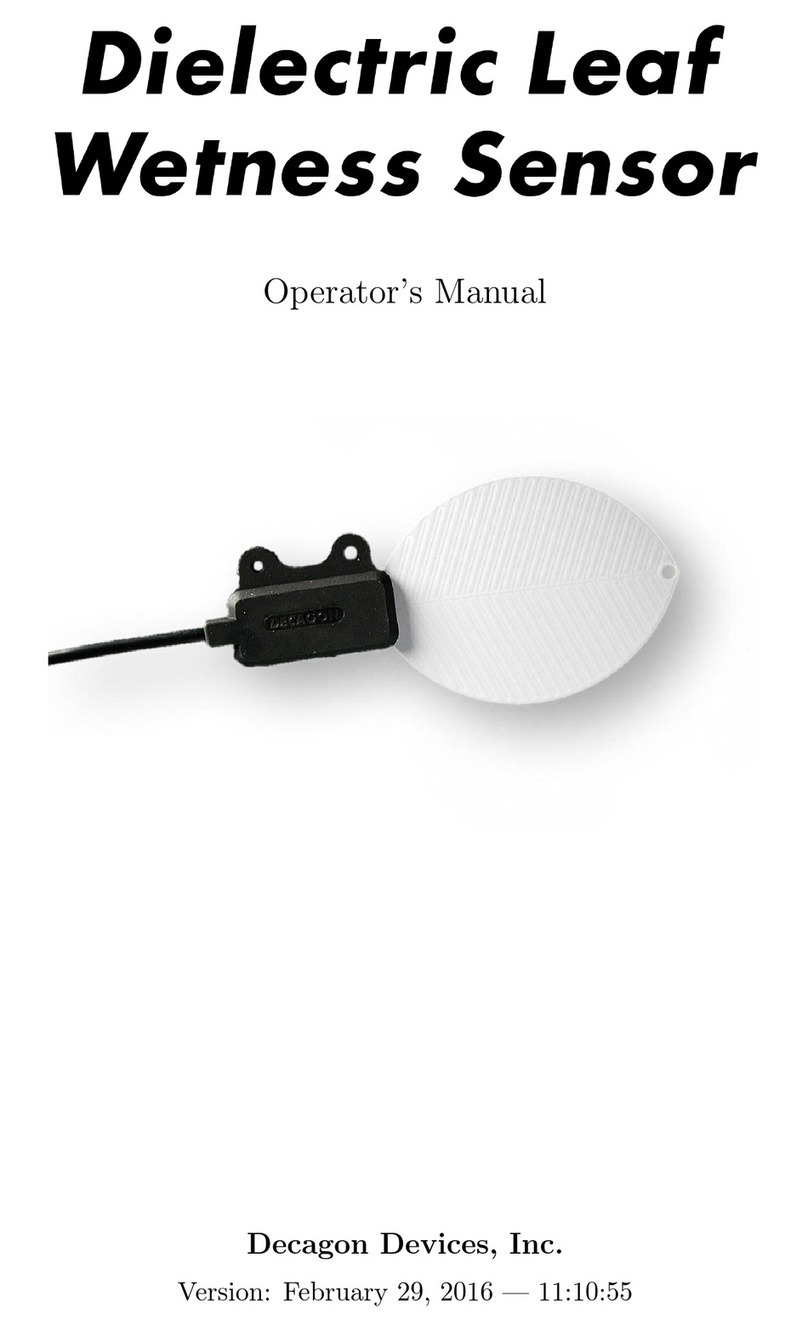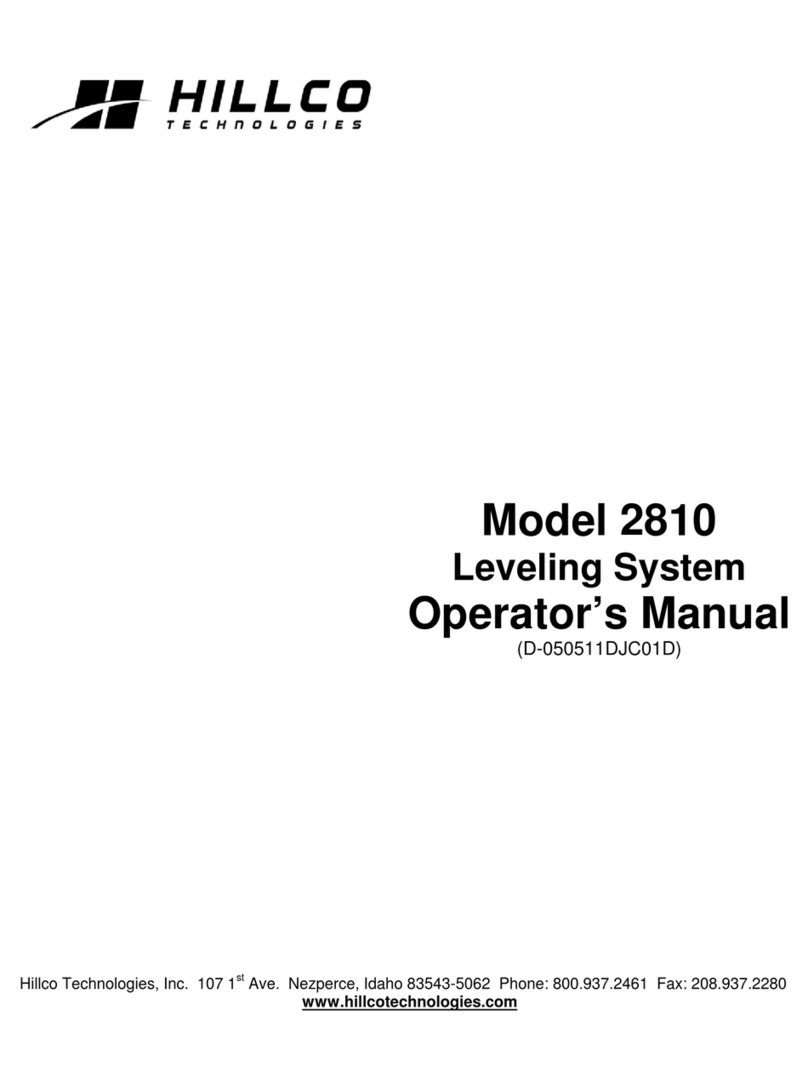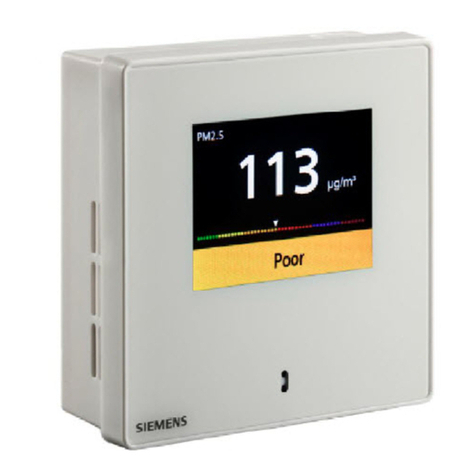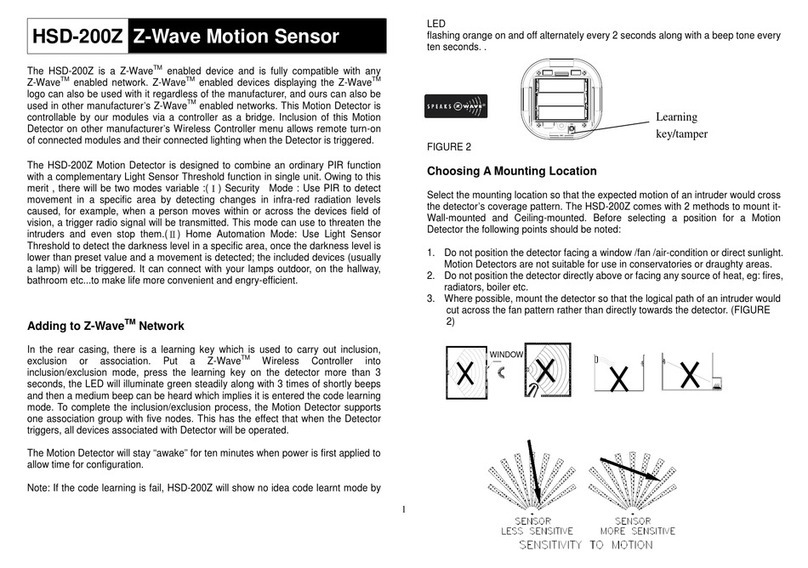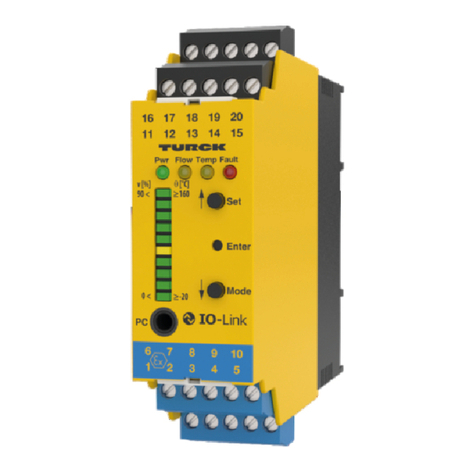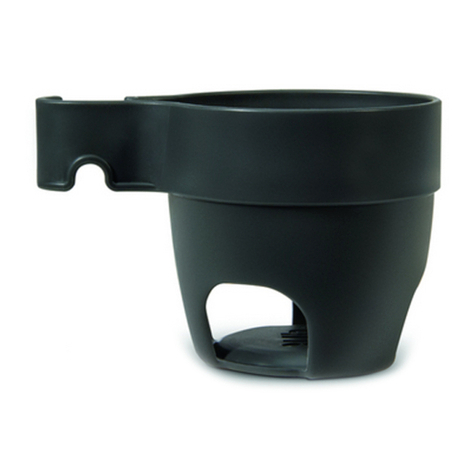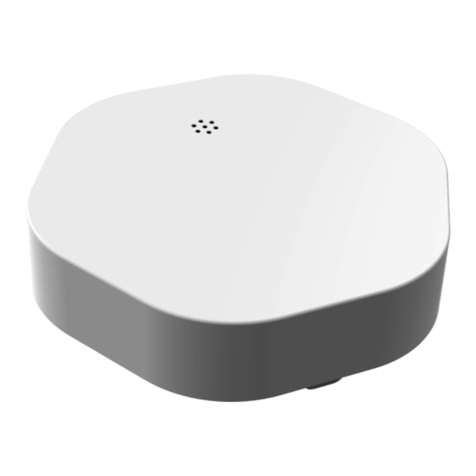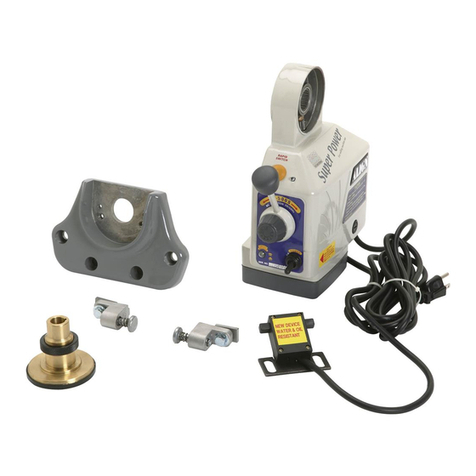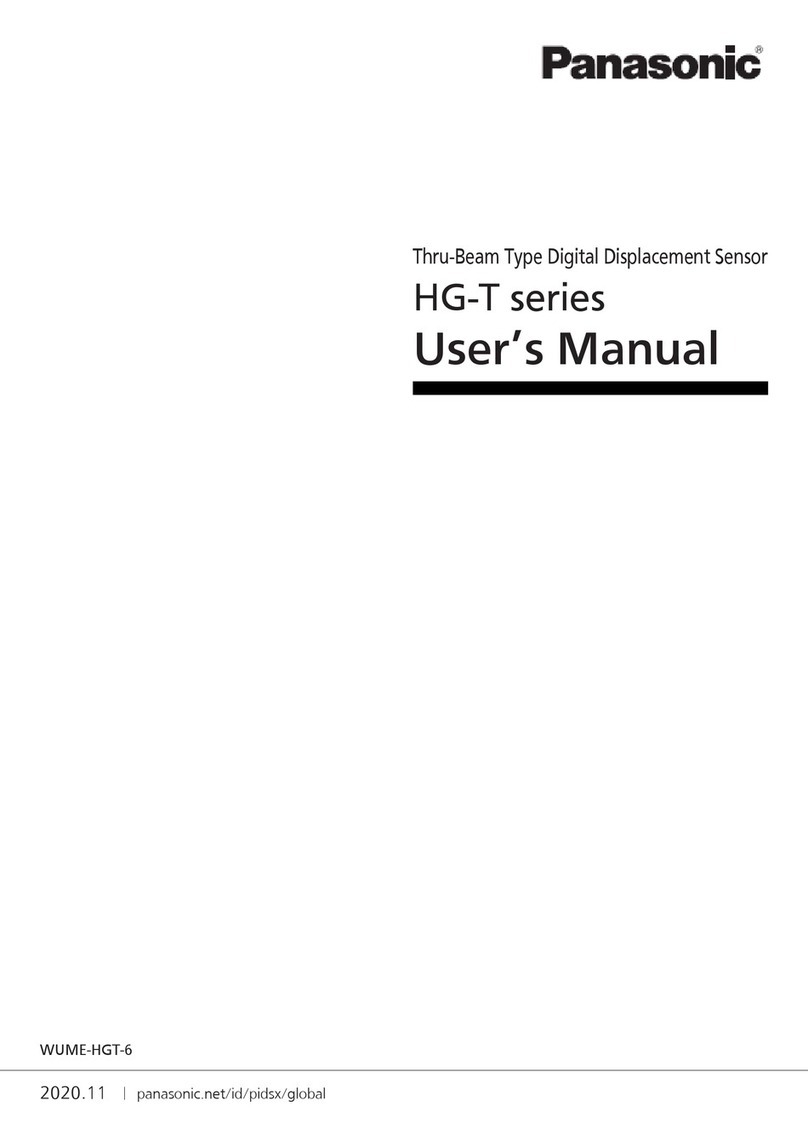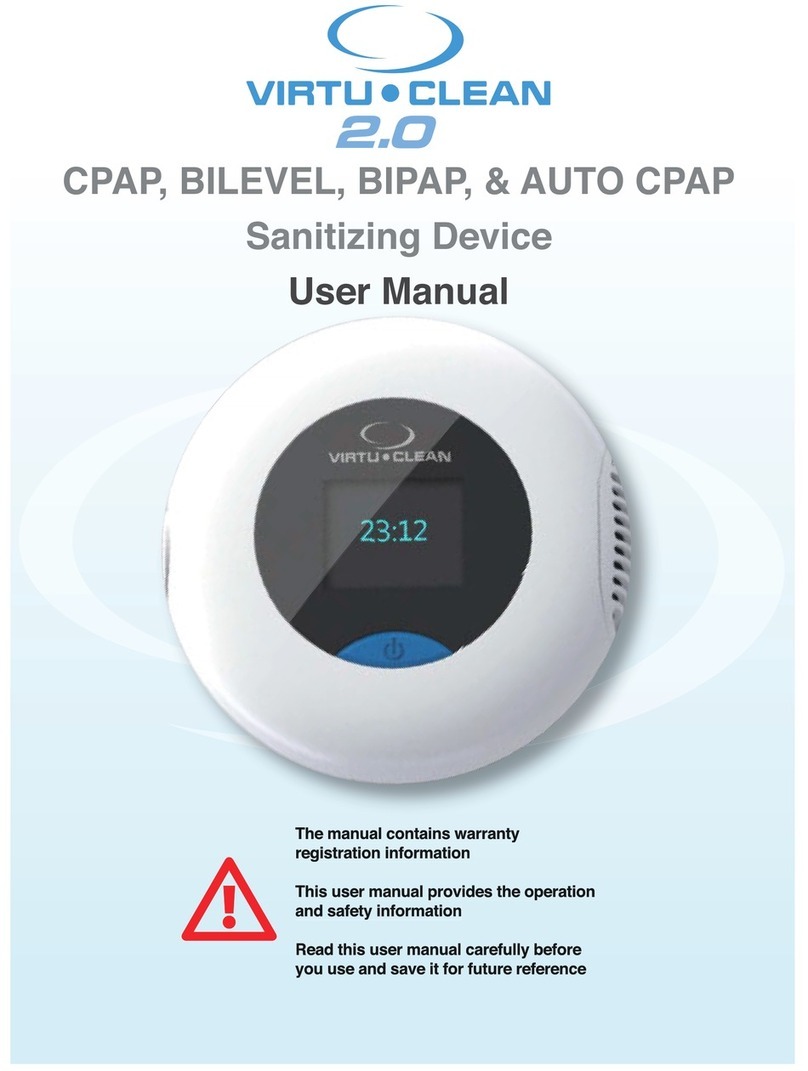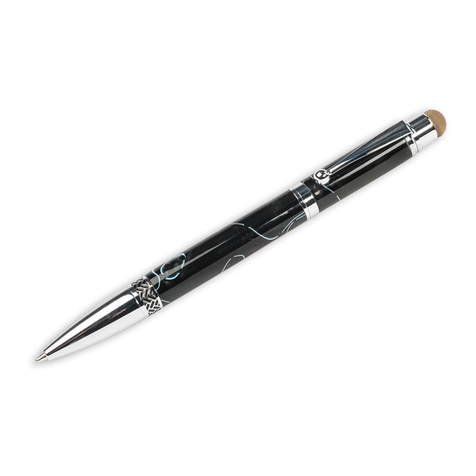
VP-3 User’s Manual
1. Introduction
1
1. Introduction
About the VP-3
Thank you for choosing Decagon’s VP-3 for measuring vapor
pressure, temperature and relative humidity (RH). This manual is
designed to help you understand the sensor’s features and how to
use this device successfully. The Decagon VP-3 sensor is an
accurate tool for monitoring vapor pressure, temperature and
relative humidity. The VP-3 utilizes a single sensor chip that
measures both temperature and RH. Each RH/T sensor chip is
individually calibrated with temperature and RH calibrations
stored on board and applied before data are output, ensuring best
possible accuracy. A micro-processor within the VP-3 calculates
vapor pressure from the RH and temperature measurements and
outputs all three parameters using an RS232 (TTL) string and the
common SDI-12 communication protocol.
The VP-3 sensor is packaged in a rugged Delrin housing with the
sensor electronics potted in marine grade polyurethane encapsulant.
The RH/T sensor chip is protected by a hydrophobic porous Teflon
filter that is water and dust proof, but has an extremely high vapor
conductance allowing fast sensor equilibration with the surrounding
atmosphere. An additional stainless steel screen protects the Teflon
filter and RH/T sensor from impact and abrasion. The resulting
ultra-rugged design allows the VP-3 to withstand permanent
exposure to hostile conditions, making it ideal for a wide range of
